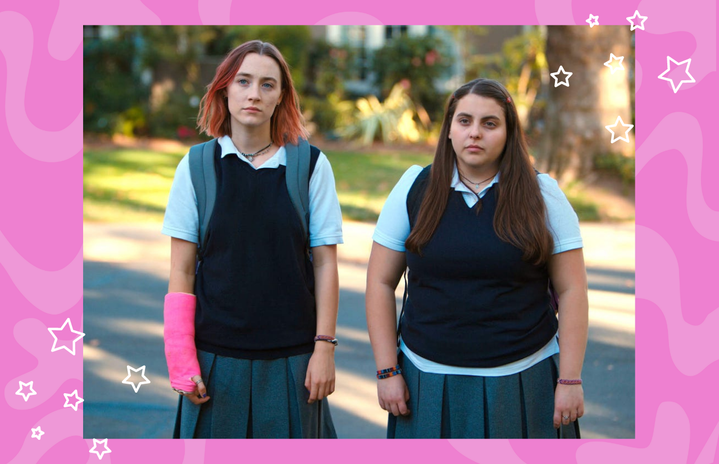When I bought myself a single ticket to Lisa Frankenstein on Valentine’s Day, I had low expectations. The movie trailer seemed fun enough so I thought I would give it a shot. But what started as a way to kill time on an otherwise uneventful holiday turned into one of my favorite movie-watching experiences of the past year. So in the year of Barbie, Five Nights at Freddy’s, and Across the Spider-Verse, what landed Lisa Frankenstein among the greats? Lisa Frankenstein was wholeheartedly and unmistakably a movie for weird girls.
Weird Girl media is definitely not a new phenomenon. Past decades have seen staples of the genre dispersed here and there. Movies like Heathers, Lady Bird, and Jennifer’s Body have cemented its existence in cinema. However, unlike past decades, the 2020s have fully embraced Weird Girls across all mediums.
The catalyst for this shift in pop culture came in the form of TikTok and the 2020 lockdown. During quarantine, communication was almost entirely limited to the internet and social media. This provided access to self-expression apart from the social repercussions of everyday life. The TikTok algorithm also allowed alternative subcultures to find their way into the mainstream.
Basically, Weird Girl culture is an all-encompassing way to describe the media and aesthetics of the community that formed online surrounding the alternative fashion and artistic expression of “weird girls.”
In the past, society defined weird girls as women who were unable to achieve ideal womanhood. Some women attempted to distance themselves from this claim by outright rejecting femininity. Patriarchal pressures and internalized misogyny led to the invention of phrases such as “I’m not like the other girls.” What sets the Weird Girl aesthetic apart from this stereotype is that it chooses to embrace femininity.
The Weird Girl aesthetic celebrates femininity by transforming it in a fun new way. The style is often characterized by maximalism, exaggerated makeup, and bright colors. Weird Girl icons have cited Y2K and 80s fashion as major points of inspiration. And in my personal experience, there is something so empowering about wearing excessive glitter, pink hair, and a mini skirt as an adult. Weird Girl fashion allows women to reclaim the freedom of expression they lost during childhood.
One of the negative side-effects of female socialization is the loss of girlhood. Girls are forced by circumstances to mature much faster than their male counterparts. By incorporating elements of nostalgia into their wardrobe, Weird Girls feel they are able to reconnect with their younger selves. This is one of the many reasons why media franchises like Monster High and Sanrio play major roles in Weird Girl culture.
It is worth noting that almost all of the well-known examples of Weird Girl media center white women. This is not to say that there are no women of color embracing this aesthetic. Aliyah’s Interlude and Hemlocke Springs are two examples of black artists who embody the Weird Girl aesthetic in their art. Therefore, it is instead an example of pop culture overlooking creativity in favor of whiteness.
As much as I love finding new online labels to cling to, it is important to remember where these labels come from. The black and queer communities are both largely responsible for this cultural phenomenon. In 2024, I hope to see more women of color and queer people spotlighted in Weird Girl media.
Some of my current favorite Weird Girl artists are:


